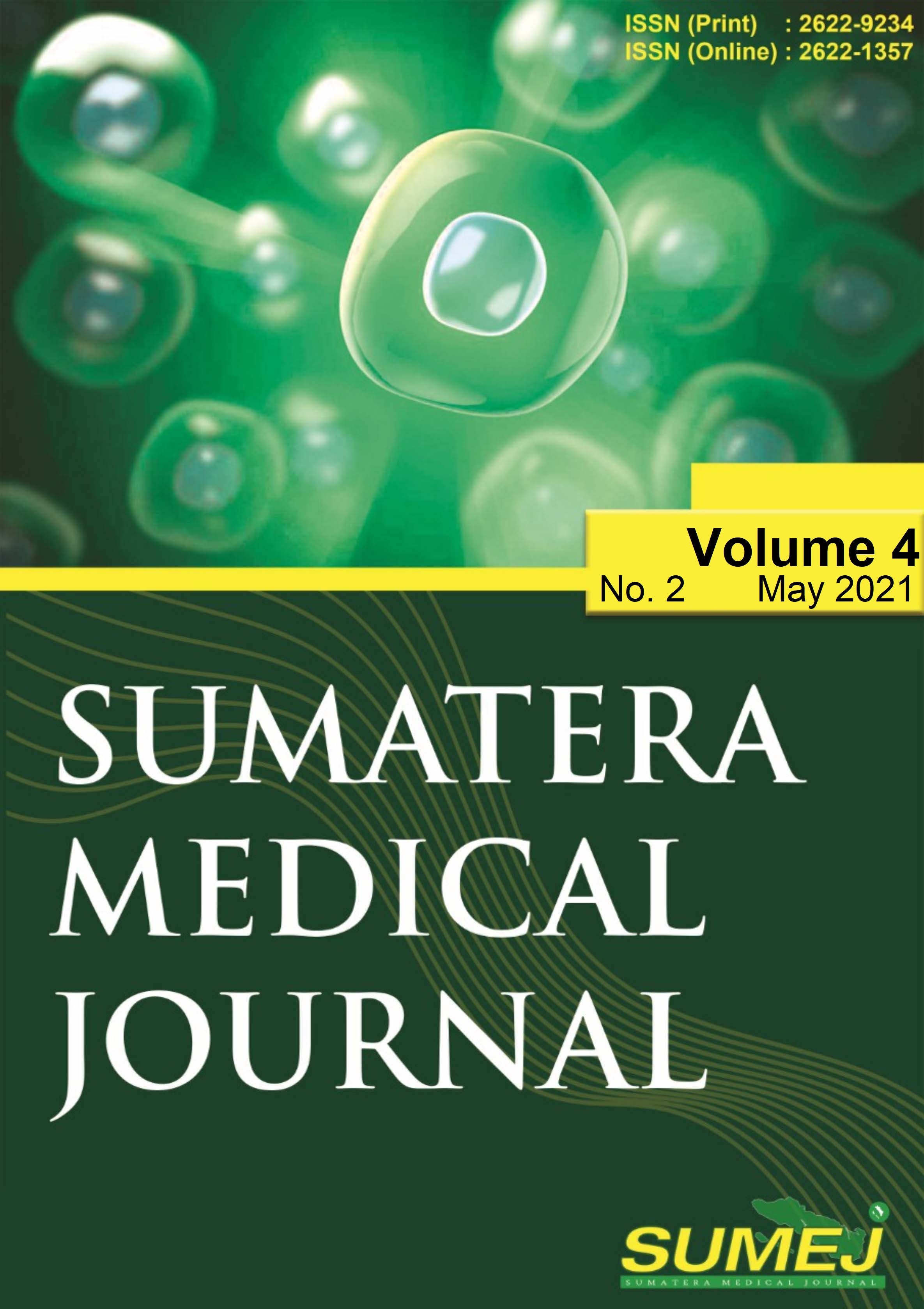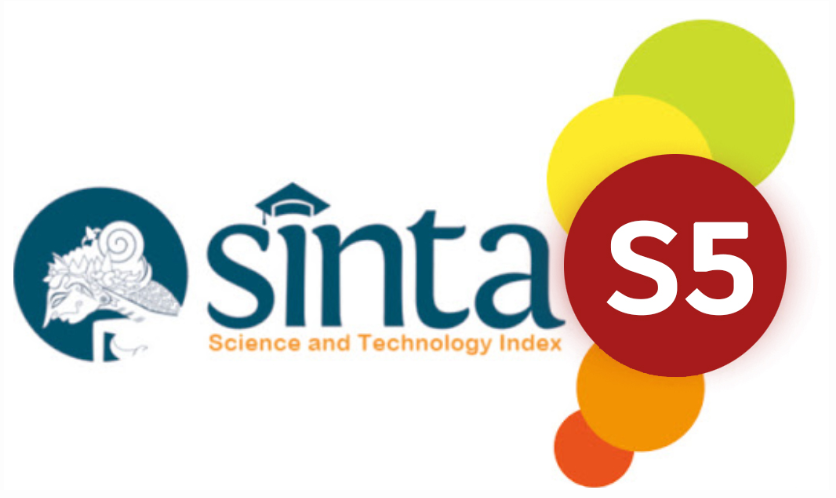Dermatophyte Profile in Patients with Dermatophytosis in Polyclinic Dermatology and Venerology of the General Hospital Dr. Ferdinand Lumbantobing Sibolga in 2019
DOI:
https://doi.org/10.32734/sumej.v4i2.5602Keywords:
Dermatophytosis, Tinea Corporis, Tricophyton rubrumAbstract
Dermatophytosis is a superficial skin infection caused by dermatophytes that infected keratinous skin tissue, dermatophytes form molecules that bind to keratin as a source of nutrients in the formation of colonization. Dermatophytes that cause dermatophytosis are Tricophyton sp, Epidermophyton sp and Microsporum sp. To find out the Profile of dermatophytes in patients with dermatophytosis in the Polyclinic of Dermatology and Venerology Dr. Ferdinand Lumbantobing Sibolga in 2019 conducted observational research with cross sectional design. The sample of this study were 75 patients who were new patients and had not used antifungal drugs. This sample is then examined by examination of KOH and cultured and then identified by Scotch-tape Preparation in a microscope. The prevalence of dermatophytosis in this study was 23% of skin cases. The majority of dermatophytosis patients are women (52%), the most age group is 46-65 years (30.7%) and is most often found in housewives (24%). The dermatophytes species found were Trichophyton rubrum, Trichophyton mentagrophytes and Microsporum canis with the most species Trichophyton rubrum (37.3%), which was then followed by Trichophyton mentagrophytes (16%). Tinea corporis, tinea cruris, tinea capitis, tinea pedis and tinea unguinum are dermatophytosis cases that were found in this study. It can be concluded that Trichophyton rubrum is the most common cause of dermatophytosis in Dr. Ferdinand Lumbantobing Sibolga with Tinea corporis is the most classified classification of dermatophytosis.
Downloads
References
Carrol, K.C., Butel, J.S., ... Mietzner, T., 2015. Jawetz Melnick & Adelbergs Medical Microbiology 27th Edition, McGraw Hill Professional.
Koksal, F., Er, E., Samasti, M., 2009. Causative agents of superficial mycoses in Istanbul, Turkey: Retrospective study. Mycopathologia 168, 117–123. doi:10.1007/s11046009-9210-z.
Rosita, C., Kurniati, 2008. Etiopatogenesis Dermatofitosis ( Etiopathogenesis of Dermatophytoses ). Berkala Ilmu Kesehatan Kulit dan Kelamin 20, 243–250.
Anra, Y., Putra, I.B. and Lubis, I.A., Profil dermatofitosis pada narapidana Lembaga Pemasyarakatan Kelas I Tanjung Gusta, Medan. Majalah Kedokteran Nusantara The Journal Of Medical School, 50(2), pp.90-94.
Abbas KA, Mohammed AZ, Mahmoud SI. 2012. Superficial Fungal infections. Mustansiriya Medical Journal. 11:75-7. Available at https://www.iasj.net/iasj?func=fulltext&aId=52145.
Kusmarinah, B., 2009. Epidemiologic Trend of Superficial Mycosis in Indonesia, Department of Dermato-Venereology, Faculty of Medicine, University of Indonesia, Cipto Mangunkusumo Hospital, Jakarta, Disampaikan pada Kongres National IV & Temu Ilmiah Perhimpunan Mikologi Kedokteran Manusia dan Hewan Indonesia (PMKI) Manado.
Kanti, E.A.A., Rahmanisa, S., 2014. Tinea Corporis With Grade I Obesity In Women Domestic Workers Age 34 Years. Fakultas Kedokteran Universitas Lampung Medula.
Nussipov, Y., Markabayeva, A., ... Lotti, T., 2017. Clinical and Epidemiological Features of Dermatophyte Infections in Almaty, Kazakhstan. Open Access Macedonian Journal of Medical Sciences 5, 409. doi:10.3889/oamjms.2017.124.
Bitew, A., 2018. Dermatophytosis: Prevalence of Dermatophytes and Non-Dermatophyte Fungi from Patients Attending Arsho Advanced Medical Laboratory, Addis Ababa, Ethiopia. Dermatology Research and Practice 2018, 1–6. doi:10.1155/2018/8164757.
Kardhani, A., Rachmi, E., Nurjanti, L, 2009. Pola distribusi penderita Dermatofitosis berdasarkan unur, jenis kelamin, dan tipe klinis di bagian/SMF Ilmi Kesehatan Kulit dan Kelamin FK Unmul/RSUDAWS Samarinda, Tugas akhir skripsi hal 50-56.
Khusnul, Kurniawati, I., Hidana, R., 2018. Isolasi dan Identifikasi Jamur Dermatophyta Pada Sela- sela Jari Kaki Petugas Kebersihan di Tasikmalaya. Kesehatan Bakti Tunas Husada 18, 45–50.
Cyndi E. E. J Sondakh, et al., 2016 Profil Dermatofitosis di Poliklinik Kulit dan Kelamin RSUP Prof. Dr. R. D. Kandou Manado Periode Januari – Desember 2013, Jurnal e-Clinic (eCl),Volume 4, Nomor 1, Januari-Juni 2016.
Sibolga, D.K.K., 2017. Profil Kesehatan Kota Sibolga Tahun 2016. Dinas Kesehatan Kota Sibolga.
Hidayatullah, T.A., Nuzula, A.F. and Puspita, R., 2019. Profil Dermatofitosis Superfisialis Periode Januari–Desember 2017 Di Rumah Sakit Islam Aisiyah Malang. Saintika Medika: Jurnal Ilmu Kesehatan dan Kedokteran Keluarga, 15(1), pp.25-32.
Sondakh, C.E., Pandaleke, T.A. and Mawu, F.O., 2016. Profil dermatofitosis di Poliklinik Kulit dan Kelamin RSUP Prof. Dr. RD Kandou Manado periode Januari–Desember 2013. e-CliniC, 4(1).
Yuwita, W. and Ramali, L.M., 2016. Karakteristik Tinea Kruris dan/atau Tinea Korporis di RSUD Ciamis Jawa Barat (Characteristic of Tinea Cruris and/or Tinea Corporis in Ciamis District Hospital, West Java.
Saragih, G.D., Depary, A.A. and Hutabarat, G.F., 2015. Karakteristik Penderita Tinea Korporis Dengan Diagnosa Penunjang Koh 10% Di Dr. Pirngadi Medan Tahun 2014. Jurnal Kedokteran Methodist, 8(2), pp.24-28.
Levitt, J.O., Levitt, B.H., Akhavan, A. and Yanofsky, H., 2010. The sensitivity and specificity of potassium hydroxide smear and fungal culture relative to clinical assessment in the evaluation of tinea pedis: a pooled analysis. Dermatology research and practice, 2010.
Oktavia, A., 2012. Prvalensi Dermatofitosis di Poliklinik Kulit dan Kelamin RSUD Tangerang Periode 1 Januari 2011 sampai dengan 31 Desember 2011.
Lakshmanan, A., Ganeshkumar, P., Mohan, S.R., Hemamalini, M. and Madhavan, R., 2015. Epidemiological and clinical pattern of dermatomycoses in rural India. Indian journal of medical microbiology, 33(5), p.134.
Downloads
Published
How to Cite
Issue
Section
License
Copyright (c) 2021 Sumatera Medical Journal

This work is licensed under a Creative Commons Attribution-NonCommercial-NoDerivatives 4.0 International License.
The Authors submitting a manuscript do so on the understanding that if accepted for publication, copyright of the article shall be assigned to Sumatera Medical Journal (SUMEJ) and Faculty of Medicine as well as TALENTA Publisher Universitas Sumatera Utara as publisher of the journal.
Copyright encompasses exclusive rights to reproduce and deliver the article in all form and media. The reproduction of any part of this journal, its storage in databases and its transmission by any form or media, will be allowed only with a written permission from Sumatera Medical Journal (SUMEJ).
The Copyright Transfer Form can be downloaded here.
The copyright form should be signed originally and sent to the Editorial Office in the form of original mail or scanned document.











